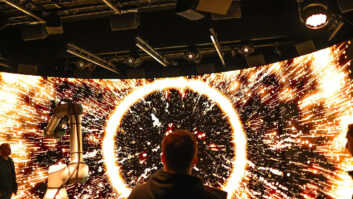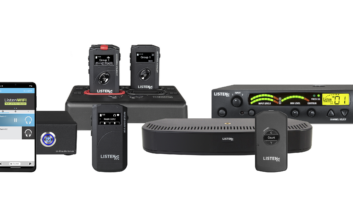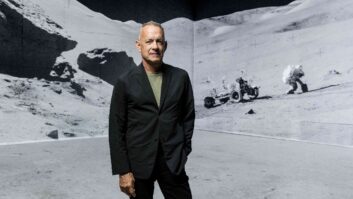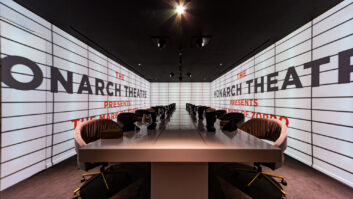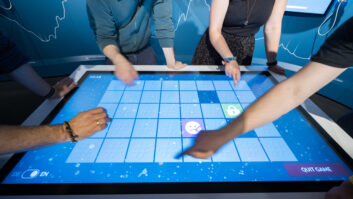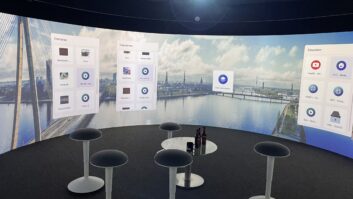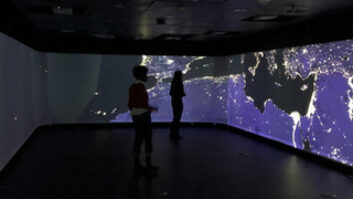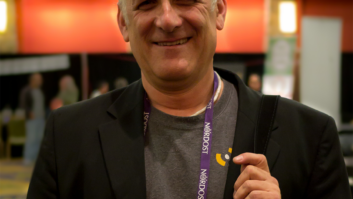Our last major overview of live events & visitor attractions painted a picture of two sectors roaring back into life after a couple of subdued, pandemic-afflicted years. To the immense relief, one assumes, of promoters, organisers and venue owners everywhere, the desire of people for communal experiences was swiftly proven to be undimmed, while a slew of high-profile projects – including ABBA Voyage and the Van Gogh Exhibition: The Immersive Experience – confirmed the desire of attraction developers to engage with exciting new technologies.
Twelve months later and it’s clear that many AV companies have benefited from another strong spring and summer period (see page 34). But what’s also clear is that a cost of living problem that was only beginning to emerge at this time last year has now developed into a full-blown crisis with no apparent end in sight. With what promises to be a tough winter period ahead for many people, it’s very likely that this will have a marked impact on attendance at live events (LEs) and visitor attractions (VAs) as we start to contemplate the arrival of 2024.
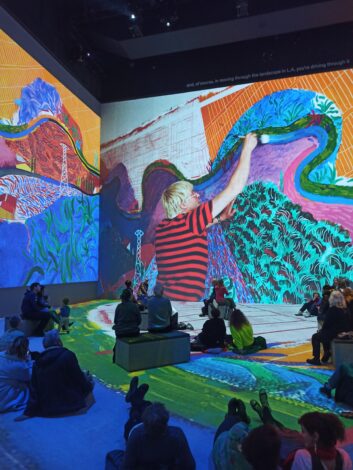 This can be predicted with some confidence given that the crisis has already been shown to have a marked impact on participants in live events, not least due to a drop in non-festival events. For example, a recent survey conducted by booking platform Encore Musicians reported that 64% had seen their number of gigs decrease as a result of the crisis, while 79% thought that rising fuel prices would limit how far they can travel for gigs in the future. (See page 46 for our article on supply issues in the festivals sector.)
This can be predicted with some confidence given that the crisis has already been shown to have a marked impact on participants in live events, not least due to a drop in non-festival events. For example, a recent survey conducted by booking platform Encore Musicians reported that 64% had seen their number of gigs decrease as a result of the crisis, while 79% thought that rising fuel prices would limit how far they can travel for gigs in the future. (See page 46 for our article on supply issues in the festivals sector.)
PERFORMERS IN PERIL
Perhaps most significantly in terms of developing acts that go on to play larger venues and, indeed, headline festivals, an increasing number of musicians are no longer doing music full-time, with 51% said to have taken a second job as a result of current circumstances. A further 23% are considering taking on a new job, with only 26% feeling confident enough in their prospects to concentrate solely on music.
With the Music Venue Trust reporting one UK grassroots music venue closure per week in 2023 – a bleak outcome attributed to rising costs and a dearth of (UK) government support – it’s clear that there is going to be a lack of newer artists to take centre stage in five or ten years’ time without a substantial change of course. With a number of major acts already retired or heading out on farewell tours, a major generational change is occurring that could pose serious existential challenges for arenas and stadiums, in particular.
Simultaneously, we are in the midst of a profound technological shift that will affect the way people engage with LEs and VAs – in ways both obvious and less so. The impact of various technologies that fall under the Mixed Reality (MR) umbrella is increasingly obvious, especially in some of the headline-making exhibitions. Now, with AI applications on the horizon, it’s likely that our conception of creative possibilities is about to receive another major shake-up.
Collectively, these various developments are likely to mean that, to use broadcasting terminology, the ‘battle for eyeballs’ (and ears) is going to be even more intense in future. As well as an evermore acute focus on costing and configuration, this will doubtless lead to even greater deployment of cutting edge technologies. This article will address a few of the emerging trends impacting LEs and VAs, beginning with one of the most significant – immersive audio.
It’s important to note that immersive audio in the public arena isn’t exactly a new phenomenon, although there has certainly been an upsurge in interest of late. Above all, it seems there has been a recognition that immersive capabilities give event organisers and venue owners more options – and, consequently, more flexibility to cater to a wider range of productions.
HEIGHTENED IMMERSION
Reese Kirsh is segment manager, performing arts & live at immersive audio innovator HOLOPLOT. “Immersive and spatial audio systems have become a prominent subject of interest [for engineers and operators],” he says. “Nevertheless, the predominant feedback we have received indicates that the primary goal remains consistent: ensuring that every attendee enjoys exceptional audio quality and unparalleled clarity. If this pursuit also results in a heightened sense of immersion within the audio system, it is viewed as an additional and favourable outcome. At HOLOPLOT, our vision is to not only offer the unparalleled coverage that engineers require, but also to provide an additional toolkit of immersive capabilities that are unmatched by any other sound system.”
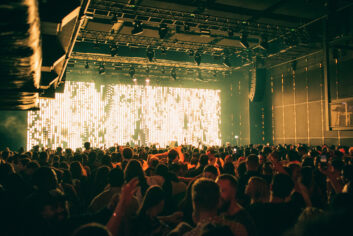
In addition to regular live gigs and permanent attractions, there are signs that festival organisers are becoming increasingly interested in the potential of immersive areas – more of which anon. But that’s not to say that this whole area of exploration doesn’t come with its share of potential challenges for operators, both due to cost and practicality.
“Immersive audio systems often require a significant number of loudspeaker arrays, [which are] typically placed in a circular arrangement around the audience to create a 360-degree sound experience, says Kirsh. “Due to the additional loudspeakers and rigging locations, it can be very costly and time consuming to try and implement this approach,” although he adds that “the same cost implications can also be true for when it comes to more traditional stereo or LCR system configurations,” including multiple delay towers and side fills that may be needed for larger festival deployments.
Against this, the HOLOPLOT technology offers “a novel approach that addresses these challenges”, says Kirsh. “Our technology enables the delivery of sound over large distances without experiencing a drop in audio quality. Simultaneously, it expands the stereo image, resulting in a natural and immersive audio perception. This reduces the sensation of sound coming solely from the left, right or the nearest delay tower.”
Kirsh also highlights the opportunities presented by HOLOPLOT’s X1 system – a Matrix Array solution with 3D Audio-Beamforming Technology that was recently used by production company Illusovi Servicios at the Starlite Festival in Marbella, Spain – for the exploration of “creative possibilities for content delivery”, adding: “Immersive effects can be added without the necessity of additional speakers around the audience periphery. Each HOLOPLOT module has the capacity to produce up to 12 beams, each of which can be precisely adjusted to cover specific areas or create specific effects.”
NEW EXPERIENCES
The desire of event-goers for new experiences facilitated by the latest technology is also highlighted by Jack Page, education application support at d&b audiotechnik. “I do think that audiences are more aware of what is possible with the available technology these days, both visually and sonically,” he says. “That said – and I know I work for a loudspeaker manufacturer that is active in this area! – it’s always going to be primarily about the performances and performers. That’s the main reason people are there.”
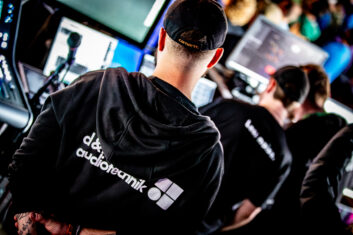 Nonetheless, d&b has had plenty of opportunities lately to gauge the impact on audiences of cutting edge audio environments, both in fixed installation and live event contexts. On the fixed installation side, recent projects include the deployment by Clair Global Integration (CGI) of d&b loudspeaker installations at three new sites operated by Outernet and located in Outernet London, the new ‘entertainment district’ opened in the city’s West End last year.
Nonetheless, d&b has had plenty of opportunities lately to gauge the impact on audiences of cutting edge audio environments, both in fixed installation and live event contexts. On the fixed installation side, recent projects include the deployment by Clair Global Integration (CGI) of d&b loudspeaker installations at three new sites operated by Outernet and located in Outernet London, the new ‘entertainment district’ opened in the city’s West End last year.
CGI worked on three music venues within the area: HERE at Outernet, a 2,000-capacity space primarily visited by touring artists; The Lower Third, a 250-capacity live music venue for smaller acts and DJs; and Forge, a 50-person capacity cocktail bar geared towards intimate acoustic performances. Each venue required its own custom audio, network and infrastructure for both independent and collaborative use; all three have been equipped with Dante audio distribution d&b audiotechnik loudspeakers, with HERE hosting one of the UK’s first installations of the XSL line array modules.
SOUND SOLUTION
Meanwhile, d&b’s immersive Soundscape solution has been making its mark on festivals, among them the experimentally-inclined Sound Unwrapped at London’s Kings Place, and WOMAD in Wiltshire, where it equipped two spaces including its own eponymously-named stage.
Designed to suit a wide variety of environments, Soundscape is powered by the DS100 Signal Engine, an audio system processor based on a Dante-enabled signal matrix. It is used in conjunction with two software modules: En-Scene, which is a sound object positioning tool allowing the individual placement and movement of up to 64 sound objects; and En-Space, an in-line room emulation tool which creates and modifies reverberation signatures for any space.
“At WOMAD this year, there were two iterations of Soundscape – the Soundscape tent, which we have had there for four years, and a second space in the WOMAD Woods,” says Page. “What was really striking was how much the artists – which included Jason Singh, who was musical artist-in-residence in the Woods area – and engineers including David McEwan really engaged with Soundscape and wanted to explore its creative opportunities, which included [the use of the system] to play back a looping piece of music, Moon Phases, that was heard throughout the day as people entered [that area].”
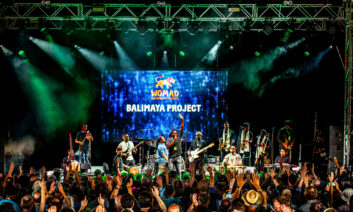 It’s also notable that – despite the relative infancy of immersive audio in a festival context – engineers are becoming increasingly adventurous with their use of the system. “There is a lot of scope for them to experiment with their own ideas,” says Page. “Some will be bolder than others, but it definitely helps if, as happened this year, there is an opportunity to talk with artists and engineers beforehand about what they can achieve [with immersive audio]. This was the case at WOMAD, with established Front of House engineer, Jack Eveleigh being responsible for the show mix of The Comet is Coming performance on the d&b Soundscape stage.”
It’s also notable that – despite the relative infancy of immersive audio in a festival context – engineers are becoming increasingly adventurous with their use of the system. “There is a lot of scope for them to experiment with their own ideas,” says Page. “Some will be bolder than others, but it definitely helps if, as happened this year, there is an opportunity to talk with artists and engineers beforehand about what they can achieve [with immersive audio]. This was the case at WOMAD, with established Front of House engineer, Jack Eveleigh being responsible for the show mix of The Comet is Coming performance on the d&b Soundscape stage.”
Moreover, as the broader surround sound discipline matures, and people feel more comfortable with a sound-field that is not fixated on the traditional front L/R configurations, “we’re going to see even more different and surprising ways for it to be used,” predicts Page.
PUSHING THE BOUNDARIES
Austin Freshwater, managing director of DiGiCo, agrees that there has been recently been a “notable increase in immersive elements” at live events. “It’s always exciting when new and innovative experiences are introduced as they push the boundaries of audio performance and provide fresh, engaging encounters for attendees,” he says.
Freshwater cites the implementation of the Open Source Control protocol – allowing for third-party devices – as being key in the success of immersive deployments: “This facilitates collaboration with other vendors and brands, making it easier for them to work with us and contribute to the delivery of these captivating experiences. By fostering partnerships and embracing new tech, we are able to continually evolve and enhance the immersive elements.”
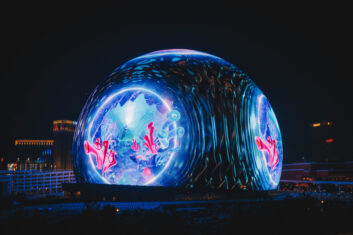 Asked whether the seemingly accelerating pace of change has brought fresh challenges for the R&D department – especially during a period of profound uncertainty in the world – Freshwater responds that, in fact, “because we’re constantly working to improve our current products and anticipating what the market needs with our new products, the impact on our R&D process has actually diminished. Although there are still a few challenges we have to overcome, we have successfully launched our new flagship console, the Quantum 852, which has significantly expanded capabilities, and we see that having similar longevity to the SD7. Our team has produced exceptional work during these difficult times. If we can thrive amidst the toughest of circumstances, it gives us confidence that we are well-prepared for the future”.
Asked whether the seemingly accelerating pace of change has brought fresh challenges for the R&D department – especially during a period of profound uncertainty in the world – Freshwater responds that, in fact, “because we’re constantly working to improve our current products and anticipating what the market needs with our new products, the impact on our R&D process has actually diminished. Although there are still a few challenges we have to overcome, we have successfully launched our new flagship console, the Quantum 852, which has significantly expanded capabilities, and we see that having similar longevity to the SD7. Our team has produced exceptional work during these difficult times. If we can thrive amidst the toughest of circumstances, it gives us confidence that we are well-prepared for the future”.
It’s also worth stating that – despite the uncertainty – there have continued to be a remarkable number of ambitious new performance-driven venue projects. Surely the most high-profile of these is Sphere in Las Vegas, the new £2.3 billion venue with a seated capacity north of 18,000 that opened on September 29 with the first of 25 performances of U2:UV Achtung Baby Live. The venue will also play host to an ‘original immersive production’, Postcard From Earth – helmed by legendary director Darren Aronofsky, best-known for his films Requiem for a Dream, Pi and Black Swan – debuted on October 6.
SPHERE IMPACT
There is no doubting the impact that Sphere is going to make, both on its actual attendees and people in the surrounding area. Standing 366 ft tall and spanning 516 ft across – making it the largest spherical structure in the world – it features an exterior, called the Exosphere, that incorporates 580,000 sq ft of fully programmable lighting, making it what is said to be the largest LED screen on earth.
Meanwhile, the interior features an 160,000 sq ft LED immersive display plane and an immersive sound system developed specifically for Sphere’s unique curved interior. Described as the world’s largest concert-grade audio system, it consists of approximately 1,600 permanently installed and 300 mobile HOLOPLOT X1 Matrix Array loudspeaker modules, and includes a total of 167,000 individually amplified loudspeaker drivers. The system employs HOLOPLOT’s next-generation 3D Audio-Beamforming and Wave Field Synthesis technology to deliver “clarity and precision” to every guest.
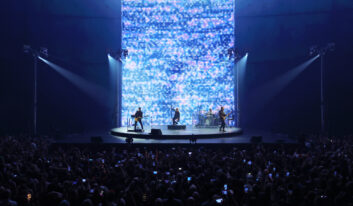
With a possible Sphere venue in East London currently under discussion, there is a chance that Vegas could prove to be the first of a series of sites worldwide. At the very least, however, it seems that Sphere will provide a spark of inspiration to other venue developers in the world to show what can be done to transcend the traditional live performance environment and create an altogether more all-encompassing experience. Even the sheer level of attention it has received in the press this year indicates that it is widely regarded as a global ‘game-changer’ in terms of venue design and experience.
Of course, that doesn’t mean that the venue sector can’t also still be thrown some unexpected curveballs. At the time of writing, it had just become clear in the UK that the ‘crumbling concrete’ crisis – revolving around the use of reinforced autoclaved aerated concrete (RAAC) – was going to lead to the temporary closure of a slew of prominent venues, including the Forum theatre in Stockport and St. David’s Hall in Cardiff. Coming so soon after the pandemic-enforced hiatus, having to cancel a busy schedule of events at short-notice must be deeply frustrating for venue operators, artists and ticket-holders.
CLIMATE CHALLENGES
It’s likely that the next big challenge on the horizon will be climate change – both in terms of direct threat to venues and attractions in endangered parts of the world, and with regard to the provision of adequate air-conditioning that can ensure going to a performance remains an appealing way to spend an evening. This is likely to present a challenge to many countries in Europe, in particular, where there is a preponderance of older buildings that aren’t easy to update and renovate.
In short: there is plenty to think about as venues and attractions everywhere begin to plan for the long-term in the wake of the Covid era. What should bring them some reassurance, at least, is that they have unprecedented access to new technologies, as well as an enduring enthusiastic audience, who will hopefully allow them to remain popular and relevant as their requirements evolve.
